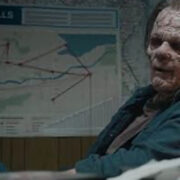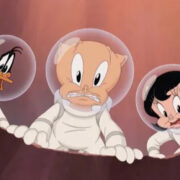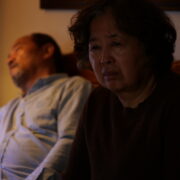BEING MARY TYLER MOORE: More Than A TV Icon
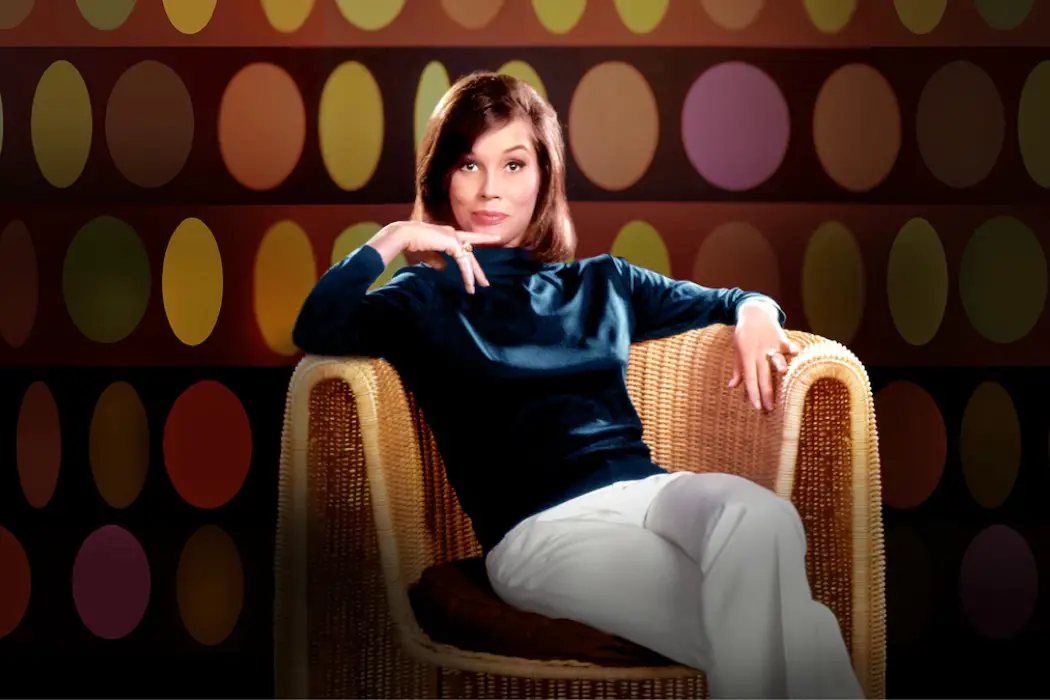
Tynan loves nagging all his friends to watch classic movies…
I’m still in my 20s, but I was introduced to Mary Tyler Moore as a 4 or 5-year-old kid. From the first time I heard Sonny Curtis singing her theme song and the title credits going, I was instantly captivated. That smile. That toss of the hat. It’s been ingrained in my memory ever since.
As I’ve grown older, I’ve come to realize it was this very same charisma that allowed Mary to be a contemporary woman – ahead of her time in some ways – and still America’s sweetheart. It was not until many years later I learned about people like Betty Friedan or Gloria Steinem on an intellectual level. Mary Tyler Moore preceded them all by coming into family living rooms.
Being Mary Tyler Moore involves an exploration of the full breadth of her life. Not only is it full of personal remembrances, but it also charts her career, one that was so intimately intertwined with the rise of television.
Early roles included an elfin spokeswoman for Hotpoint appliances featured during The Adventures of Ozzie and Harriet. She then played David Janssen‘s sultry telephone operator in Richard Diamond, Private Eye. This gig lasted until she had the gall to ask for a raise since the part was getting so much publicity without showing her face or her name in the credits. She was unceremoniously sacked.
Soon after she was in the running to play Danny Thomas‘s TV daughter on Make Room for Daddy. No doubt it hurt losing out on the part though, the role might have easily pigeonholed her career. At the time, she would not have known the auspicious things ahead of her, but, of course, Mary followed Marlo Thomas‘s That Girl in portraying a single working girl on television. Years later the reason for her not getting the Danny Thomas job was far easier to laugh at. No one would have believed someone with a nose as petite as hers could be related to him.
A Budding Comedienne
Eventually Mary would receive her first prominent role as the housewife, Laura Petrie, on The Dick Van Dyke Show, and it gave her the opportunity to work with one of her heroes Carl Reiner. Reiner was already a sainted comedic mind thanks to his early television work with Sid Caesar on Your Show of Shows.

Reiner remembers how an early episode called “My Blonde-Haired Brunette” was Moore‘s initiation into comedy. Always a fan of Nanette Fabray (who would later play her onscreen mother), Moore channeled her humor into her own ability to cry. She recalls another famous sitcom cryer, Lucille Ball, on the catwalk up above laughing at one of her scenes. It was one of the greatest gifts she ever received: adulation from one of her forerunners.
Her characterization feels twee by today’s standards, but in the early ’60s a housewife on a sitcom had never been given this opportunity and she took it, making it her own. Laura had opinions. Laura wore pants, not pearls when she cleaned, and she was funny. All of these were thanks to Moore and her burgeoning comic sensibilities.
Looking back in a later interview Mary admits Laura led a pretty dull life. She didn’t light up until Rob walked through the door and tripped over the ottoman. It’s a true enough statement and in her own life while Moore believed in marriage and children she was still figuring out a way to contribute to society in other ways.
Thoroughly Modern Mary
After The Dick Van Dyke Show went off the air, Mary was at an inflection point. She received a movie deal and appeared in some stage productions including a musical rendition of Breakfast at Tiffany’s with Richard Chamberlain that was brutalized by the press.
During this period she also suffered a miscarriage and received the diagnosis of diabetes that would follow her for the rest of her life. Stretches like these show how a career in Hollywood is such a fickle thing, and it can wax and wane for inexplicable reasons.
In 1969 she reunited in a TV variety show special with Dick Van Dyke and the ratings success led CBS to offer Mary her own television show. It felt like her whole career had set her up for an opportunity such as this.
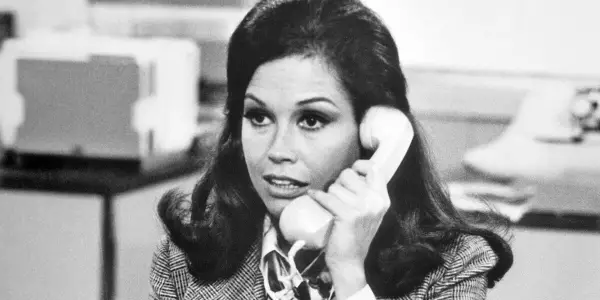
Her husband Grant Tinker set up a production company, MTM Enterprises, to develop the show, and he hired James L. Brooks and Allan Burns to write it. I am fascinated with how their previous credits on shows like That Girl, Room 222, and He & She somehow presaged what we would get with The Mary Tyler Moore Moore, a program that was quietly groundbreaking, funny, and full of humanity.
We get glimpses of the notorious test pilot that I had never seen, partially because it bombed spectacularly. The show could have been dead in the water. Thankfully, it was tweaked and became an all-time classic.
One of the joys of the documentary is recognizing all the women who supported Mary in her career and this becomes especially apparent during the run of her own show. Brooks is quick to credit script supervisor Marge Mullen for suggestions that saved the pilot. MTM was also the first show that brought on women like Treva Silverman and Susan Silver as standalone writers.
It was a show that normalized and celebrated friendships among women thanks to the likes of Valerie Harper and Cloris Leachman, and these were always alongside the workplace relationships with Mary at the center of both worlds.
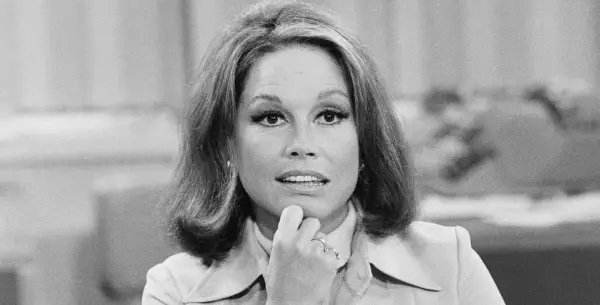
The show would join All in The Family, MASH, The Bob Newhart Show, and The Carol Burnett Show for a veritable murderer’s row of television during the 1970s. If I had been alive then, I can’t imagine pulling myself off the family sofa. It’s true these shows were destined to be seen by thousands more for generations to come. Mary was a big part of it.
Conclusion: Being Mary Tyler Moore
As the documentary moves into her later career, there are two events that play in sharp juxtaposition. Mary’s son Ritchie died tragically 3 weeks after the premiere of her film Ordinary People. It’s her finest dramatic performance as a grieving parent who’s aloof and the utter antithesis of Mary Richards. It’s hard not to consider how art might have overlapped with life although I cannot begin to speculate.
In one candid moment, she acknowledges, “I don’t have a religious belief that I can rely on that says we’re here on earth to prove ourselves worthy of heaven so I have anger and I working through that.” Although I wish Mary had an economy of grace in her life, I do appreciate her existential struggle with grief. She’s not the only one, but it breaks my heart.
One of the most joyous sequences might be a home movie for MTM’s bachelorette party where Betty White stands up at the podium, and you sense the unvarnished affection these women have for one another including Mary’s lifelong pal Beverly Sanders. It gives us a real-world depiction of the camaraderie that The Mary Tyler Moore Show modeled for us week after week.
Since every human life is full of hardship and intermittent bouts of loneliness and struggle, it’s a pleasure to see these flashes of laughter and exuberance. And the same might be said of Mary’s marriage to Robert Levine. She found a man who would wake up in the middle of the night to make her a tuna fish sandwich. It’s such a mundane act, but then, that’s a lot of what it means to love and be loved.
Although Brooks is still around and working, the recent deaths of Gavin Macleod, Cloris Leachman, Ed Asner, Jay Sandrich, and Betty White, in the last several years, feel like the end of an era. And invariably all these names lead me back to Mary Tyler Moore.
She was their fearless leader and became the lodestar for a whole new generation of women and men. For anyone who has felt her impact, Being Mary Tyler Moore helps illuminate why that is. I hate to be cliché but I have to say it. She turned the world on with her smile. You know the rest.
Being Mary Tyler Moore will stream on May 26, 2023 on HBO Max!
Watch Being Mary Tyler Moore
Does content like this matter to you?
Become a Member and support film journalism. Unlock access to all of Film Inquiry`s great articles. Join a community of like-minded readers who are passionate about cinema - get access to our private members Network, give back to independent filmmakers, and more.
Tynan loves nagging all his friends to watch classic movies with him. Follow his frequent musings at Film Inquiry and on his blog 4 Star Films. Soli Deo Gloria.



